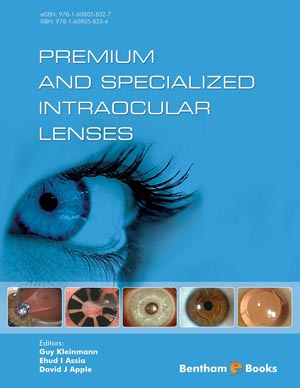Abstract
During the aging process, the spherical aberration (SA) induced by the natural lens shifts from negative to positive values, impairing optical quality. Standard spherical intraocular lenses (IOLs) similarly induce positive SA. To deal with this problem aspheric IOLs have been designed to induce a negative or neutral SA, effectively reducing optical SA in a manner similar to the lens in a young phakic eye. It has been postulated that implanting an aspheric IOL would improve image clarity over that provided by a standard spherical IOL because of reduced optical aberrations. Multiple simulations, as well as clinical trials evaluating mesopic and photopic contrast sensitivity, have shown that aspheric IOLs indeed provide improved spectacle corrected contrast function over comparable spherical IOLs. This is especially true for under scotopic conditions where maximal pupillary dilation increases the magnitude of optical SA errors. However, the clinical significance of these contrast improvements for the average cataract patient has been called into question for many reasons, primarily because senile miosis effectively minimizes the magnitude of post-operative optical SA. Recent efforts to use aspheric IOLs to individualize post-operative ocular SA have shown promising visual results; however the ideal post-operative spherical aberration has not yet been determined. Further study into optimizing the interaction between the full spectrum of higher order aberrations in the pseudophakic eye may be useful in defining the future role for aspheric IOL technology in enhancing visual function in pseudophakia.
Keywords: Cataract, intraocular lens, pseudophakia, spherical aberration, contrast sensitivity, visual acuity.






















